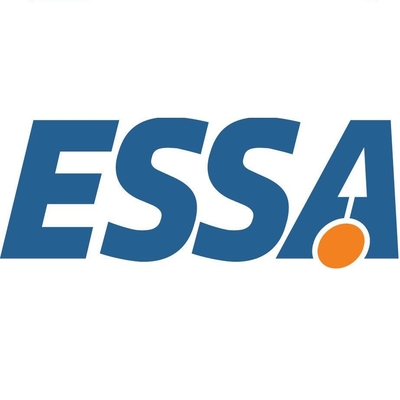ESSA Pharma, a clinical-stage pharmaceutical company focused on the development of novel small molecule drugs for the treatment of prostate cancer, announced that early data from the Phase 1 portion of the ongoing Phase 1/2 clinical trial of its product candidate, EPI-506, were featured in a poster presentation during the 2017 American Society for Clinical Oncology (“ASCO”) Annual Meeting held in Chicago.
Prostate cancer specialist, Kim N. Chi, M.D., at the BC Cancer Agency in Vancouver, presented the poster entitled, “Efficacy, safety, tolerability and pharmacokinetics of EPI-506 (ralaniten acetate), a novel androgen receptor (“AR”) N-terminal domain (“NTD”) inhibitor, in men with metastatic castration-resistant prostate cancer (“mCRPC”) progressing after enzalutamide and/or abiraterone.”
The data presented were from the Phase 1 portion of the ongoing Phase 1/2 clinical trial of EPI-506. The open-label, single-arm, dose-escalation study is evaluating the safety, pharmacokinetics, maximum tolerated dose (“MTD”), and anti-tumor activity of EPI-506 in men with end-stage mCRPC who have progressed after prior enzalutamide and/or abiraterone treatment, and may have received one prior line of chemotherapy. Twenty-one patients were available for analysis as of the May 12, 2017 ASCO data cut-off and each patient had received four or more prior therapies for prostate cancer at the time of study entry.
The 21 patients self-administered oral doses of EPI-506 ranging from 80 mg to 2400 mg, with mean drug exposure of 87 days (range of 21 to 427 days). Seventeen patients discontinued treatment, primarily due to progressive disease, and four remain on study. Three patients have undergone prolonged treatment (median of 286 days; range 219 – not reached), after intrapatient dose escalation. Prostate-specific antigen (“PSA”) declines ranging from 4% to 29% have been observed in four patients at higher doses (≥1280 mg). An analysis of human drug exposures (AUC) compared to exposure levels derived from a xenograft model of castration resistant prostate cancer (“CRPC”) showed that EPI-506 doses of ≥2400 mg were beginning to reach the anticipated target range for significant tumor growth inhibition as indicated by the model. Additional Phase 1 cohorts continue to be enrolled to evaluate a 3600 mg dose (either once-daily or 1800 mg twice-daily).
EPI-506 was well tolerated and demonstrated an acceptable safety profile in doses up to 2400 mg. No treatment-related serious adverse events were reported. The most common adverse events (“AEs”) were diarrhea (8/21) and nausea (6/21), either Grade 1 or 2. Anemia was the only AE ≥Grade 3 observed in more than one patient (3/21) but was considered by investigators to be unrelated to EPI-506. Other AEs ≥Grade 3 considered potentially related to EPI-506 included a single case of elevated AST reported as possibly related, and a single case of elevated amylase deemed probably related (“DLT”).
“To see some indication of PSA responses in such a heavily treated patient population is encouraging. Given the acceptable safety and tolerability seen to date, we look forward to additional data that will be forthcoming from patients receiving higher doses of EPI-506,” said Dr. Chi. “Prostate cancer is the second most common cancer in men. Despite the therapeutic advances made in recent years, prostate cancer patients eventually progress on these treatments, so finding new options to complement or follow these therapies is absolutely essential.”
“EPI-506 represents a novel approach to blocking the androgen pathway, and we are very pleased to have our first clinical data presented at ASCO,” said David R. Parkinson, M.D., President and Chief Executive Officer of ESSA. “We have observed signs of clinical activity at the higher doses in this analysis, which correlates with our preclinical modeling, and are continuing to enroll patients in dose cohorts higher than those reported here.”

